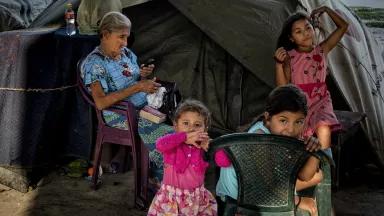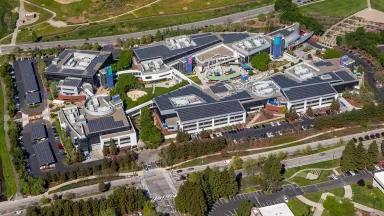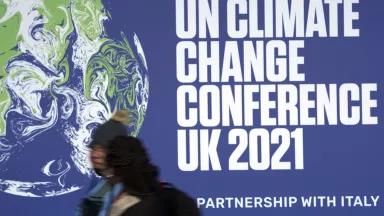Rich, Polluting Nations Still Owe the Developing World
Here’s why follow-through on a $100 billion–per–year climate finance promise, from collecting data to determining success, remains complex but critical.

Cyclone Evan wreaked havoc throughout Fiji when it passed through the island in December 2012.
AP/Tertius Pickard
There’s no denying it: Wealthy countries, particularly the United States and Western European nations, have emitted the lion’s share of greenhouse gases that led to the climate crisis. In fact, just 23 developed countries are responsible for half of all historical CO2 emissions. Yet it’s developing nations that are being hit hardest by the effects—and are the least ready to respond.
This is why rich nations made a promise at the 2009 United Nations climate summit, or COP15, in Copenhagen. Together, they agreed to mobilize $100 billion per year, officially beginning in 2020, to help developing countries reduce their emissions and adapt to the impacts of climate change.
Then they broke their promise.
They not only failed to meet the 2020 funding target but also did not clearly define what they would pay for or how to measure success. Here’s what you need to know about this funding pledge and why, even with all its flaws, climate experts believe it remains critical.
Why $100 billion?
As part of the 2009 Copenhagen climate accord, experts tried to calculate what it could cost those 23 wealthy countries to fund climate mitigation and adaptation in the developing world. Some deemed the price tag to be as high as $400 billion per year. The agreed-upon $100 billion was “more or less a compromise,” says NRDC climate strategist Brendan Guy, who was part of an NRDC team that led a discussion on taking climate finance from pledge to project at the most recent climate conference in Glasgow, COP26. Yet it remains significant largely because of the political promise it represents.
So how close are countries to hitting this yearly goal?
Beginning in 2013, donor countries attempted to ratchet up contributions each year, with the hope of reaching $100 billion by the 2020 start date. But by 2019, they had only mobilized about $80 billion in public and private climate funding, according to the Organization for Economic Cooperation and Development (OECD), an intergovernmental body made up of many of the donor countries. While the data isn’t in yet for 2020, some reports predicted that funders would scale back their commitments due to the pandemic.
Even so, these totals paint an incomplete picture, in part because countries have yet to agree on how to divvy up the pie so that all parties pay their fair share. A few organizations have come up with estimates, but the countries themselves haven’t endorsed those percentages. There are also competing perspectives for what kind of funding counts toward the goal of $100 billion per year. Some argue that this means the OECD totals are potentially inflated because, in addition to grants, they also include loans, which must be repaid with interest. A few countries that appear to have surpassed their share of funding, like Japan and France, have provided the majority of the money as loans. This is why Oxfam, an international nonprofit focused on alleviating poverty, estimates the total climate funding from 2017–18 is just a third of the OECD’s estimates—somewhere between $19 billion to $22.5 billion.

Bhadla Solar Park in Bhadla, in the northern Indian state of Rajasthan, October 2021
Sajjad Hussain/AFP via Getty Images
What does the money that is available pay for?
The money is supposed to fund both mitigation and adaptation in developing countries, which reduce emissions and help residents cope with expected climate impacts. But even this gets murky—and not just because no single organization tracks the projects that are funded. The other problem is that countries define mitigation and adaptation differently. Yes, money that goes toward the installation of solar panels or the erection of seawalls feels clear cut. But what about the building of new roads, which have been labeled by some countries as “climate-relevant,” or, as was included in Japan’s tally in 2017, funding for “cleaner” coal plants in Bangladesh? This is why Oxfam estimates that true climate-related finance has been significantly overreported.
The balance between adaptation and mitigation is also fraught. Adaptation is notoriously harder to fund, particularly from private sources—likely because those projects tend to mostly benefit local residents and don’t generate significant profits. In 2019, for example, just 25 percent of climate finance went toward adaptation.
Whether these projects are ultimately successful at achieving their goals is another data problem. Not only is success project-specific—ranging from, say, emissions reductions to the prevention of climate gentrification—but also data on outcomes remains challenging to collect and often lags years behind.
Did last year’s COP26 in Glasgow help address any of the current obstacles?
The $100 billion broken promise certainly loomed large, and some countries took the opportunity to up their commitments. For example, ahead of Glasgow, President Joe Biden proposed $11.4 billion in annual U.S. climate funding by 2024, but that requires congressional approval, which remains far from a sure thing. It’s also still only a portion of what is actually owed: The United States has emitted a quarter of all historical emissions, according to estimates from the World Resources Institute, and should pay as much as 47 percent of that $100 billion per year.
At COP26, developing countries also demanded additional money for “loss and damage”—the costs accrued from climate impacts beyond what could be adapted to—but no specific funding promise was made. (There were some inroads, thankfully, on increasing the share of adaptation finance.) Countries also attempted to remedy some of the data dilemmas with new transparency and tracking requirements but again failed to nail down uniform definitions on what counts as climate finance. At best, wealthy nations suggested that the $100 billion target would likely be met by 2023 and that funding should increase from there.
How much do developing nations truly need for climate adaptation?
The $100 billion per year was always a starting point that would increase over time. And that’s good because the U.N.’s Intergovernmental Panel on Climate Change (IPCC) estimates that developing nations will need as much as $300 billion per year just for adaptation by decade’s end. The IPCC’s estimates for the world economy to transition to clean energy at the pace required to keep warming within the 1.5 degree Celsius threshold put the cost at up to $3.8 trillion annually by 2050. And that’s still trillions less than a worst-case climate scenario.
So why does the $100 billion remain so important?
NRDC’s Guy calls the $100 billion a pragmatic, political, and ethical imperative. The whole world needs to transition away from fossil fuels—and fast, if we’re to keep warming below 1.5 degrees Celsius. But developing countries don’t always have the resources to do so, or doing so may require them to trade off short-term economic gains that could be made through keeping older, polluting infrastructure in play. The money is a pragmatic necessity to reduce emissions quickly enough and protect people in the process.
Politically, not meeting the $100 billion goal represents a significant breach of global trust when climate action requires steadfast international cooperation.
Most importantly, rich nations have an ethical responsibility to fix the crisis they caused. “There is a clear and compelling moral case to help countries most at risk, such as small islands and countries that have contributed virtually nothing to the problem in terms of emissions,” Guy says. Investing $100 billion per year represents the bare minimum toward righting such a catastrophic wrong.
This NRDC.org story is available for online republication by news media outlets or nonprofits under these conditions: The writer(s) must be credited with a byline; you must note prominently that the story was originally published by NRDC.org and link to the original; the story cannot be edited (beyond simple things such as grammar); you can’t resell the story in any form or grant republishing rights to other outlets; you can’t republish our material wholesale or automatically—you need to select stories individually; you can’t republish the photos or graphics on our site without specific permission; you should drop us a note to let us know when you’ve used one of our stories.





Pennies for the Planet
Will COP26 Move Us Closer to Solving the Climate Crisis?
The Latin Quarter
Pennies for the Planet
Will COP26 Move Us Closer to Solving the Climate Crisis?
The Latin Quarter
Pennies for the Planet
Will COP26 Move Us Closer to Solving the Climate Crisis?
The Latin Quarter
Pennies for the Planet
Will COP26 Move Us Closer to Solving the Climate Crisis?